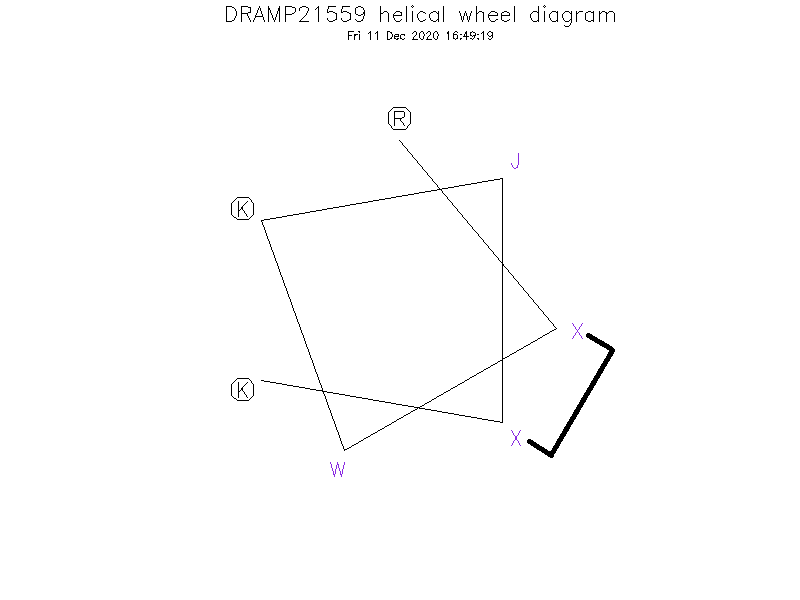-
-
-
-
-
-
Source
- Synthetic construct
-
-
Biological Activity
- Antimicrobial, Antibacterial, Anti-Gram+, Anti-Gram-
-
- Function: Antibacterial activity against Gram-positive and Gram-negative bacteria.
-
Target Organism
-
- [Ref.30361948] Gram-positive bacteria: Bacillus subtilis ATCC 6633 (MIC = 6.3 μM), Staphyolococcus aureus ATCC 6538p (MIC = 6.3 μM), Staphylococcus epidermidis ATCC 12228 (MIC= 12.5 μM);
- Gram-negative bacteria: Escherichia coli ATCC 25922 (MIC = 12.5 μM), Shigella dysenteriae ATCC 9752 (MIC = 25 μM), Salmonella typhimurium ATCC 14028 (MIC = 25 μM), Klebsiella pneumoniae ATCC 10031 (MIC = 12.5 μM), Pseudomonas aeruginosa ATCC 27853 (MIC = 25 μM)
-
Hemolytic Activity
-
- [Ref.30361948] It has 1.5% hemolysis against human red blood cells at 25 μM and 4.3% hemolysis at 50 μM.
-
Cytotoxicity
-
No cytotoxicity information found in the reference(s) presented
-
Linear/Cyclic
- Cyclic (Stapled)
-
N-terminal Modification
- Free
-
C-terminal Modification
- Amidation
-
Special Amino Acid and Stapling Position
- ①The J (position: 5) in sequence is norleucine. ②The Ⓧ (position: 2 and 6) indicates (S)-α-methyl, α-pentenylglycine. ③Ⓧ (2) and Ⓧ (6) are cross-linked by hydrocarbon stapling through an oct-4-enyl hydrocarbon staple.
-
-
Secondary Structure
- α-helix in a 25 mM potassium phosphate solution (pH 6.5).
-
Structure Description
- All analogs displayed similar CD spectra to that of KKK, having two minima near 208 and 222 nm and a maximum near 190nm, which are characteristic of α-helices.
-
-
There is no predicted structure for DRAMP21559.
- Literature 1
-
Title
- Effects of lysine-to-arginine substitution on antimicrobial activity of cationic stapled heptapeptides
-
-
Reference
- Arch Pharm Res. 2018 Nov;41(11):1092-1097. doi: 10.1007/s12272-018-1084-5. Epub 2018 Oct 25.
-
Author
- Huy X Luong, Do-Hee Kim, Bong-Jin Lee, Young-Woo Kim

